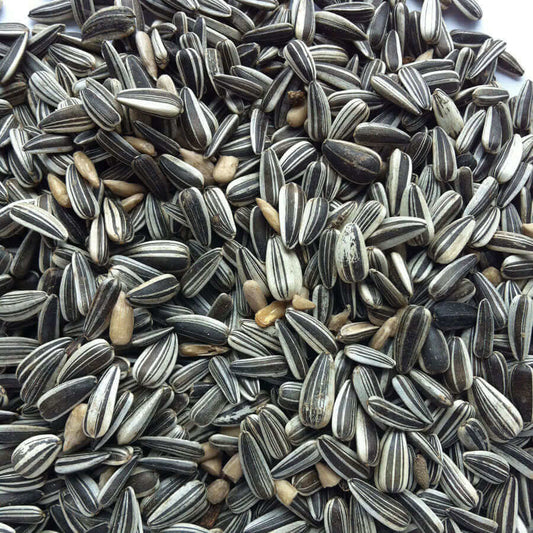The Beautiful Mathematics Inside a Sunflower Head
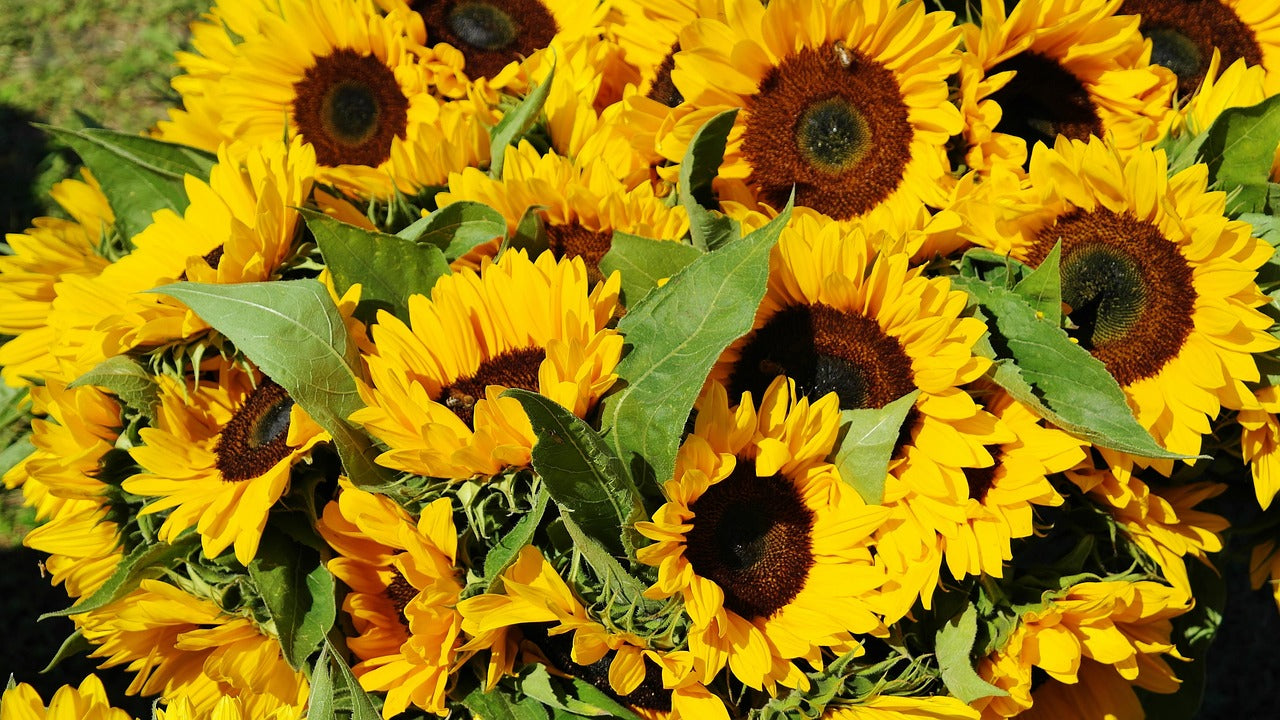
Sunflowers are a joy to grow and a pleasure to look at - with their big, sunny faces and bright yellow petals, they seem almost designed to make us smile. But if you’ve ever taken a closer look at the centre of a sunflower, you might have noticed something remarkable: the seeds aren’t placed in straight lines or random clusters. Instead, they form an intricate pattern of spirals, arranged with such precision that nature’s mathematics is on full display. In this article, we’ll explore how those seeds are arranged, what the Fibonacci sequence and the golden ratio have to do with it, and even why a sunflower turns its head. It’s a fascinating mix of science, art, and nature’s perfect efficiency.
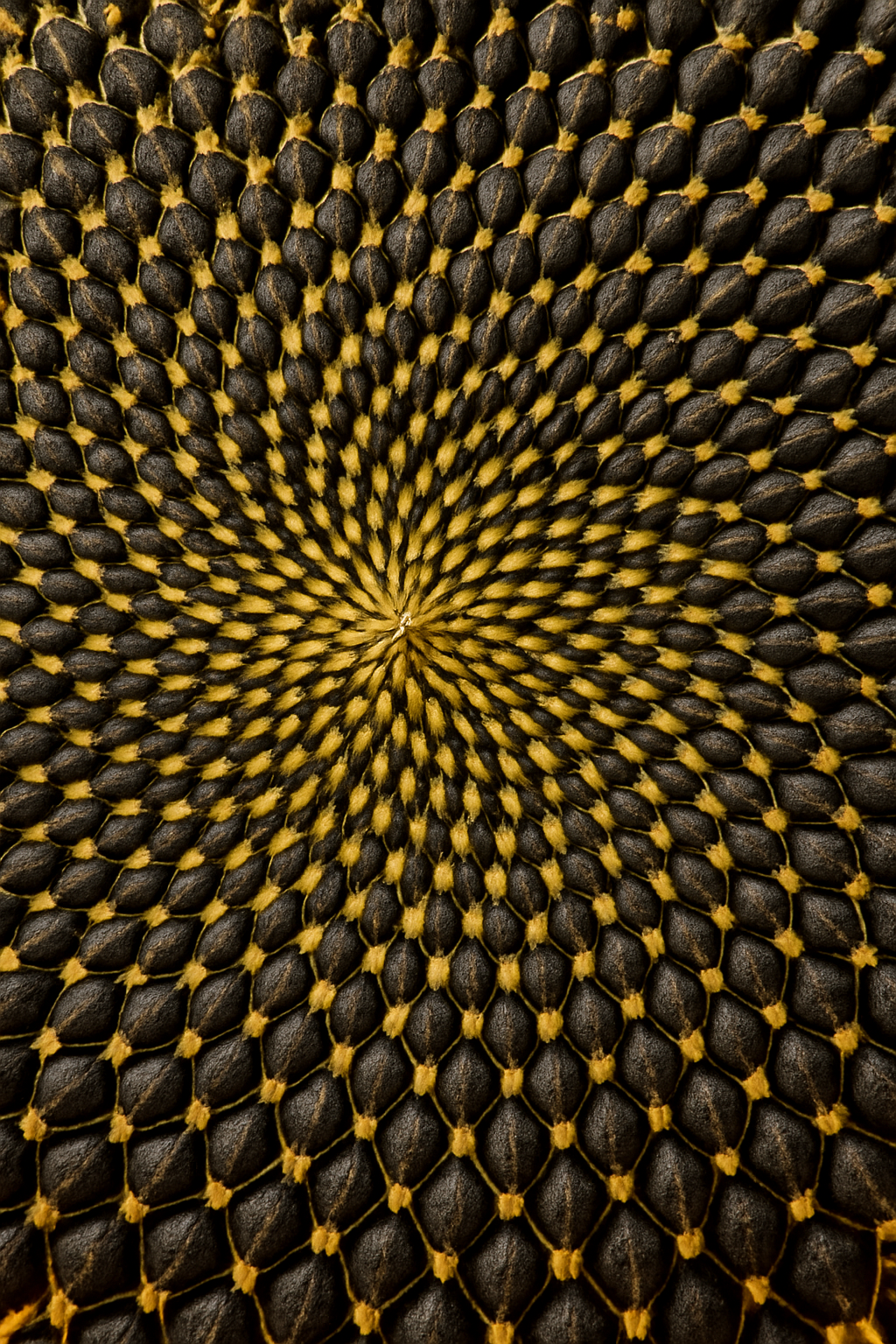
A Closer Look at the Sunflower Head
What we often call the “flower” of a sunflower is actually a collection of hundreds, sometimes thousands, of tiny flowers known as florets. These florets mature into seeds, each one perfectly positioned in a spiral pattern radiating out from the centre.
If you were to gently remove the seeds and map their positions, you’d see two sets of spirals winding in opposite directions - one set spiralling clockwise and the other counter-clockwise. This isn’t just pretty decoration. This arrangement is the most efficient way to pack seeds into the space available without leaving gaps or overcrowding.
The Secret Behind the Spiral - The Fibonacci Sequence

The sunflower’s spiral arrangement is closely linked to a famous mathematical sequence discovered in the 13th century by Leonardo of Pisa, more famously known as Fibonacci.
The Fibonacci sequence goes like this:
1, 1, 2, 3, 5, 8, 13, 21, 34, 55, 89, 144, …
-

Each new number is created by adding the two previous numbers together. This sequence appears surprisingly often in nature: in the number of petals on many flowers, the arrangement of leaves around a stem, the pattern of pine cones, and - as we’re discussing here - the seeds in a sunflower.
-

In a sunflower, the number of spirals in one direction and the number of spirals in the other direction are often neighbouring numbers from the Fibonacci sequence. For example, a sunflower might have 34 spirals going clockwise and 55 going anti-clockwise. Some larger varieties can have even higher pairs, like 55 and 89.
This pairing of Fibonacci numbers isn’t random. It’s nature’s way of ensuring the seeds are packed in the most space-efficient way possible.
From Fibonacci to the Golden Ratio
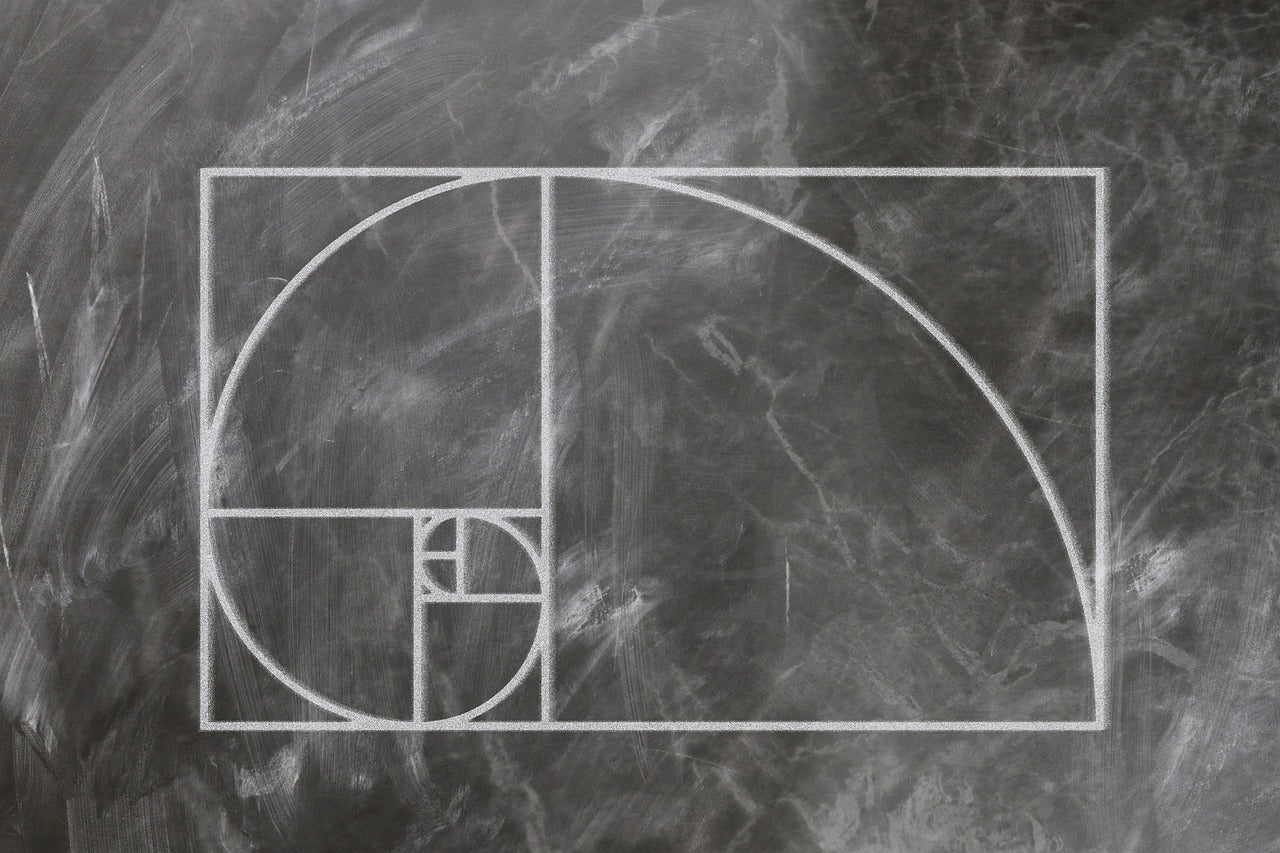
The Fibonacci sequence is closely connected to another famous mathematical concept: the golden ratio.
The golden ratio, often written as the Greek letter φ (phi), is approximately 1.6180339887… and has fascinated artists, architects, and scientists for centuries. It’s considered aesthetically pleasing and appears in art, design, and nature.
When you divide one Fibonacci number by the one before it (for example, 55 ÷ 34), the result gets closer and closer to the golden ratio as you move further along the sequence.
So what does this have to do with sunflowers? Well, the angle between successive seeds in a sunflower head is approximately 137.5 degrees, known as the golden angle. This angle is derived from the golden ratio and is the key to the spiral pattern.
Why 137.5 Degrees Is Perfect for Packing Seeds
Imagine you’re placing seeds one at a time into a circular space, starting from the centre and moving outward. If you placed each new seed directly opposite the last, you’d end up with empty lines radiating outwards - wasted space.
If instead, you placed each new seed at exactly 137.5 degrees from the last, the seeds never line up in straight rows. Instead, they fill the available space evenly and form the beautiful spiral patterns we see in sunflowers.
Mathematically, this is the most efficient packing arrangement for seeds or similar objects in a circular area. Nature uses it not only in sunflowers but also in pinecones, pineapples, and even some succulents. It’s a natural solution to a complex problem - one that mathematicians only fully understood centuries after sunflowers had been doing it perfectly.
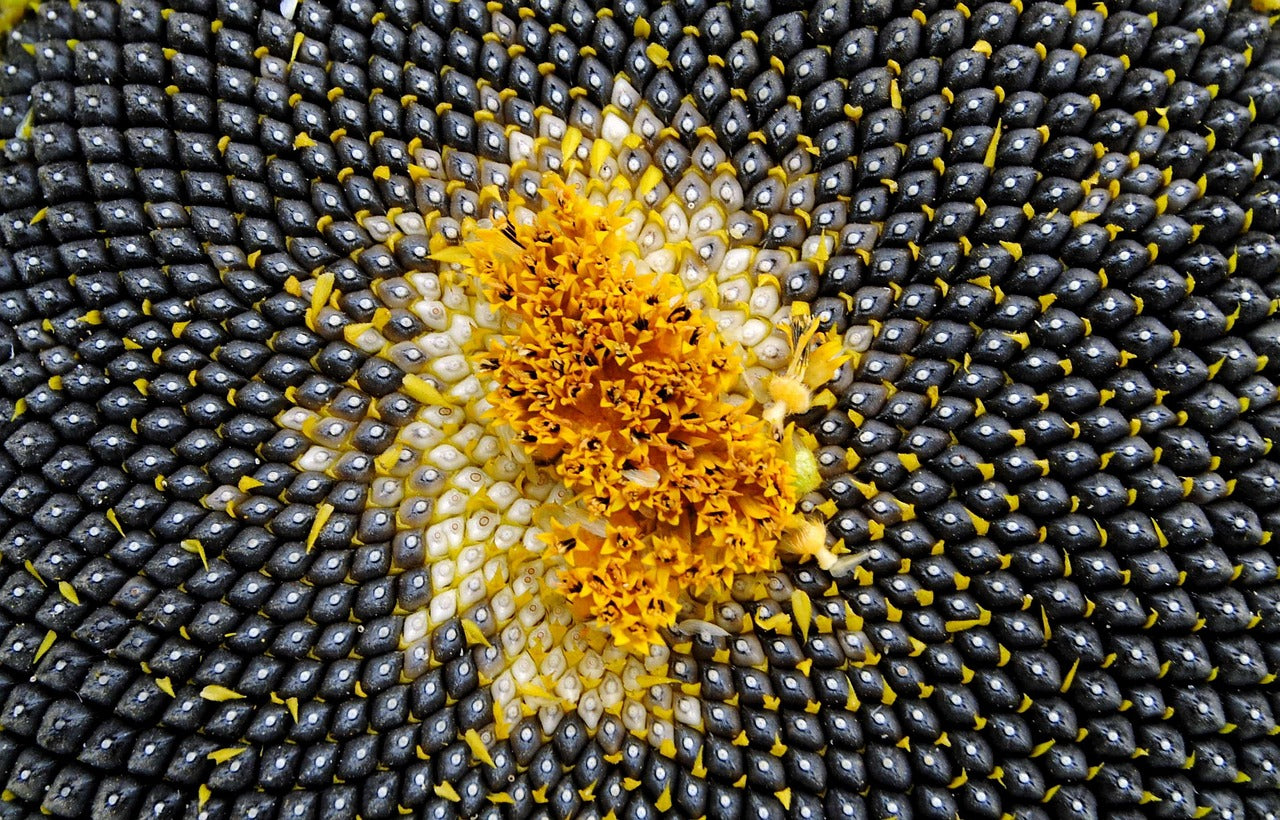
Nature’s Engineering at Its Finest
This combination of Fibonacci numbers, the golden ratio, and the golden angle isn’t just pretty - it’s practical. By packing seeds as tightly as possible, the sunflower can produce more seeds in the same amount of space, which increases its chances of reproduction. More seeds mean more opportunities for birds, insects, and the wind to help spread them far and wide. In a way, the sunflower’s spiral is both a work of art and a survival strategy.
Why Sunflowers Turn Their Heads
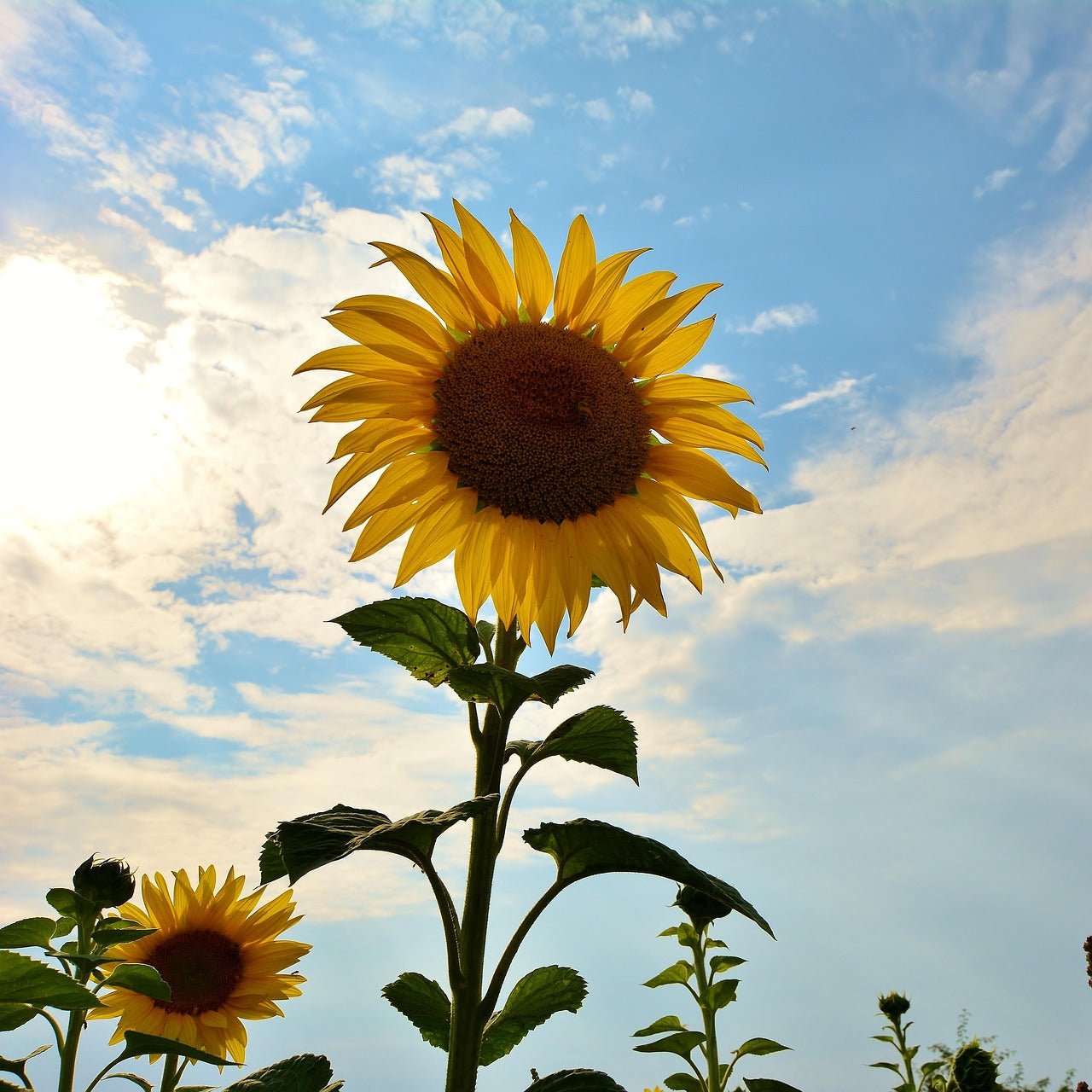
The beauty of a sunflower isn’t just in its seed pattern. If you’ve ever grown them, you’ll know they seem to follow the sun throughout the day. This behaviour is called heliotropism.
When young sunflowers are still developing, their heads track the movement of the sun from east in the morning to west in the evening. At night, they reset by turning back towards the east, ready for the next sunrise.
This daily movement helps the plant grow faster. By following the sun, the young sunflower maximises the amount of light its leaves and flower buds receive, boosting photosynthesis and giving it more energy for growth.
Once the sunflower matures and its head becomes heavy with seeds, it generally stays facing east. This positioning helps the flower warm up more quickly in the morning, attracting more pollinators such as bees, which prefer warmer flowers.
The Connection Between Sunflowers and the Seasons
-

Sunflowers don’t just grow for our pleasure; they’re part of a bigger ecosystem. Birds often feed on their seeds in late summer and autumn, and the plant’s tall, sturdy stems provide shelter for insects and even small animals.
-

By producing seeds in such a perfect spiral arrangement, the sunflower ensures that wildlife has an abundant food source, and humans have an impressive example of nature’s problem-solving skills to admire.
In fact, sunflower seeds are a popular addition to bird food mixes - so next time you’re filling your feeder, you might just be holding a little piece of nature’s mathematical magic in your hand.
Shop sunflowers here:
-
Sunflower Hearts - Premium Quality
Vendor:HAITH'S to HOME4.99 / 5.0
(203) 203 total reviews
Regular price From £4.99 GBPRegular priceUnit price / per£4.99 GBPSale price From £4.99 GBP -
Black Sunflower Seed - SuperClean
Vendor:HAITH'S to HOME4.94 / 5.0
(16) 16 total reviews
Regular price From £14.99 GBPRegular priceUnit price / per£14.99 GBPSale price From £14.99 GBP -
Small Striped Sunflower
Vendor:HAITH'S to HOME5.0 / 5.0
(4) 4 total reviews
Regular price From £4.99 GBPRegular priceUnit price / per£4.99 GBPSale price From £4.99 GBP
Bringing It All Together
The arrangement of seeds in a sunflower head is far more than a pretty pattern. It’s a perfect demonstration of how mathematics, efficiency, and beauty can come together in nature:
- Fibonacci Sequence: The numbers of spirals follow this ancient sequence, optimising the seed layout.
- Golden Ratio: This mathematically pleasing ratio is the foundation for the golden angle that governs seed placement.
- Golden Angle (137.5 degrees): Ensures each seed is placed to avoid wasted space, resulting in the stunning spirals we see.
- Heliotropism: Young sunflowers turn their heads to track the sun, boosting their growth and ensuring they’re in the best position to attract pollinators.
From the mathematical elegance hidden in its seed spirals to its graceful movement in the sunlight, the sunflower is a shining example of how form and function work together in the natural world.
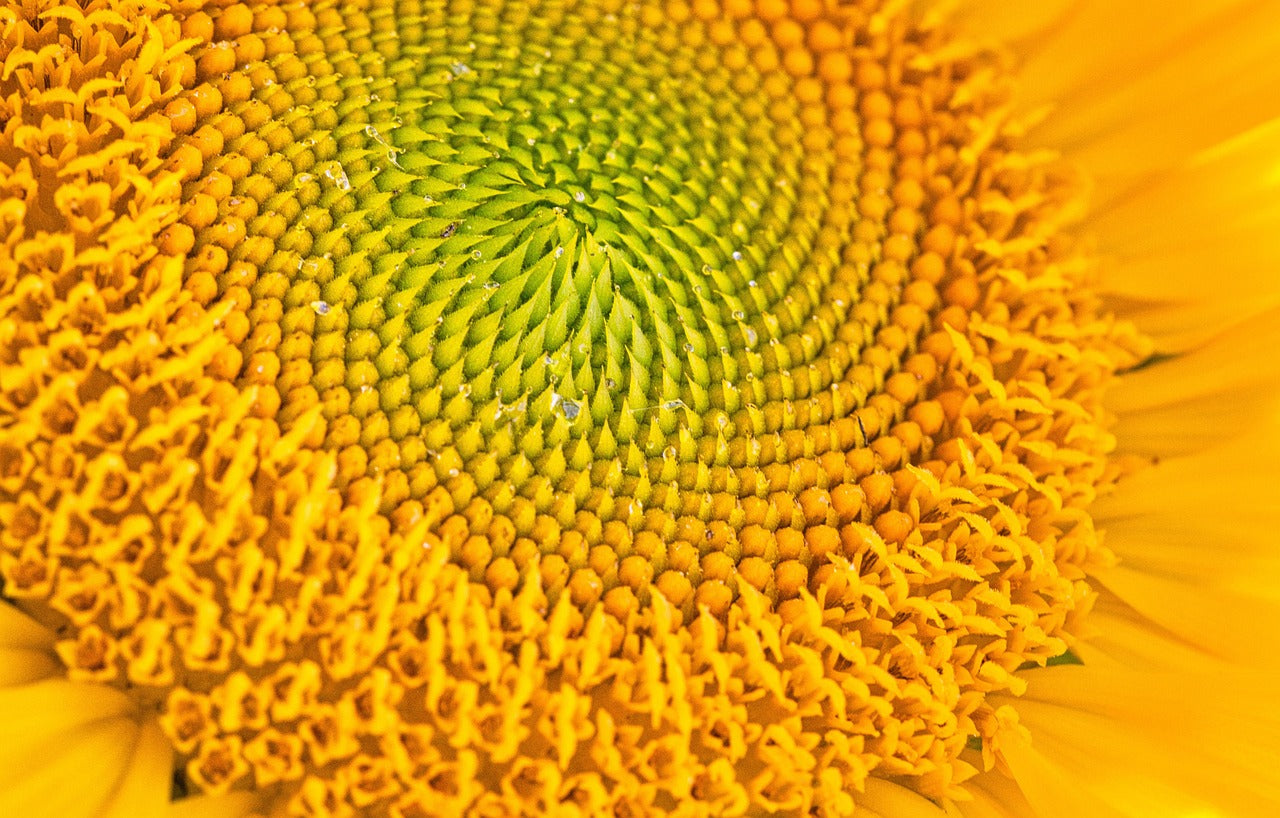
Next time you see a sunflower, take a moment to look closely at its centre. Those spirals are not just beautiful; they are the result of millions of years of evolution, fine-tuning the most efficient way to fill a space. They’re a living link between nature and mathematics, and a reminder that sometimes the most complex problems can have the simplest, most elegant solutions. So whether you grow sunflowers for their seeds, for the wildlife they attract, or simply for their cheerful faces in the garden, you can enjoy them even more knowing that you’re looking at one of nature’s finest pieces of mathematical artwork.







